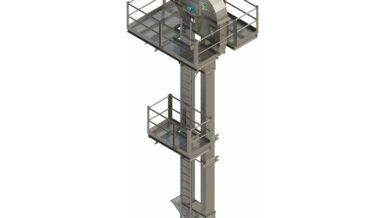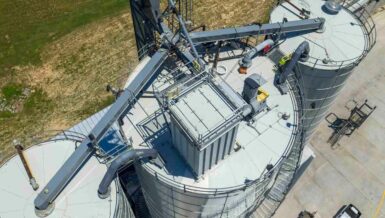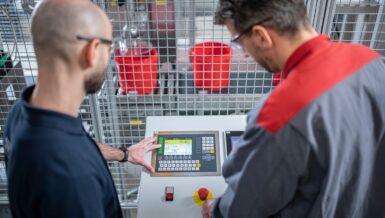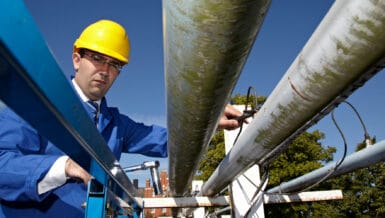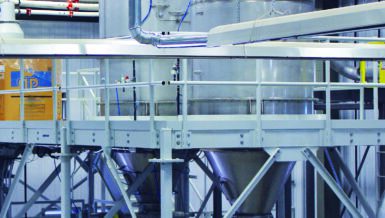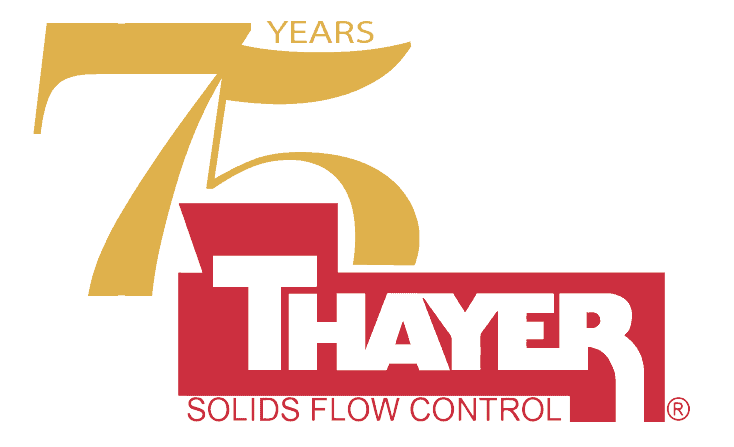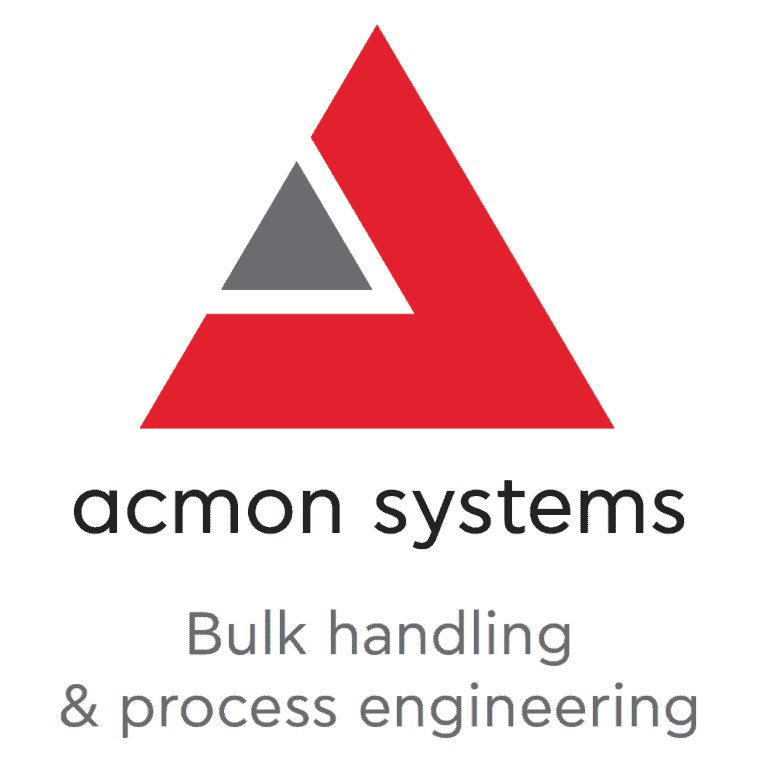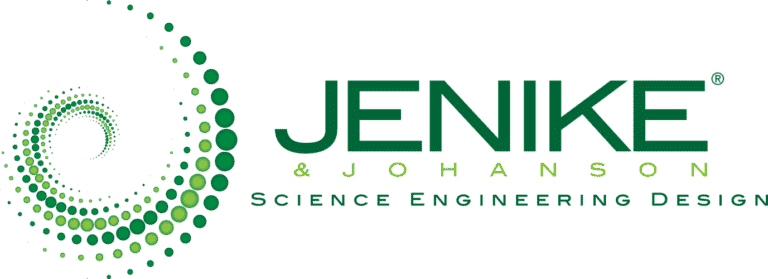The following are examples of common issues found during bucket elevator inspection programmes conducted by 4B, along with suggestions how these issues can best be addressed.
ISSUE 1: Worn / loose slide lagging
The rubber surface on the head pulley’s slide lagging may wear away, and also laggings can come loose and scrape the casing, which can create heat and sparks. In addition, the reduced contact between the pulley surface and the belt can cause the belt to slip under the load, which will also lead to excessive heat. Either of these heat sources could ignite a dust cloud inside the elevator, resulting in an explosion. Finally, if a perforation is worn into the casing dust can escape, and extensive hot work repair will be required.
To help with early indication of these types of issues, the installation of a speed switch on the tail shaft can sound an alarm and provide automatic shutdown before a dangerous belt split condition persists. Also, a correctly positioned misalignment switch can detect a misaligned belt, a misaligned pulley or a piece of lagging that has come loose. These sensors can alarm or shut down the bucket elevator so that corrective repairs can take place.
ISSUE 2: Broken elevator buckets
No matter the precautions taken, tramp material such as rocks, metal wrenches and wood boards can find their way into bucket elevators. The impact of these foreign objects in the product stream takes a toll and can result in broken buckets. Impact can also knock buckets loose from the belt, diminishing throughput and could potentially cause a plugging situation. Screens and magnets located at the inlet can help capture tramp material before it enters the elevator. Plug sensors can also help to detect a blocked chute. Also, heavier duty elevator buckets with stronger front lips can withstand more impact than lighter duty.
ISSUE 3: Excessive bucket wear
Aside from broken buckets, prematurely worn buckets can diminish throughput and make discharge inefficient. Another consequence could be early discharge, resulting in material falling back down the upside of the elevator leg, also known as back-legging. Back-legging just adds to the problem of premature wear because additional material ends up in the boot and the buckets must dig through it, wearing them further. Causes of this issue could include an under-tensioned belt, improper belt speed, excessive digging or material buildup in the boot, as well as possibly the wrong style of elevator bucket being installed.
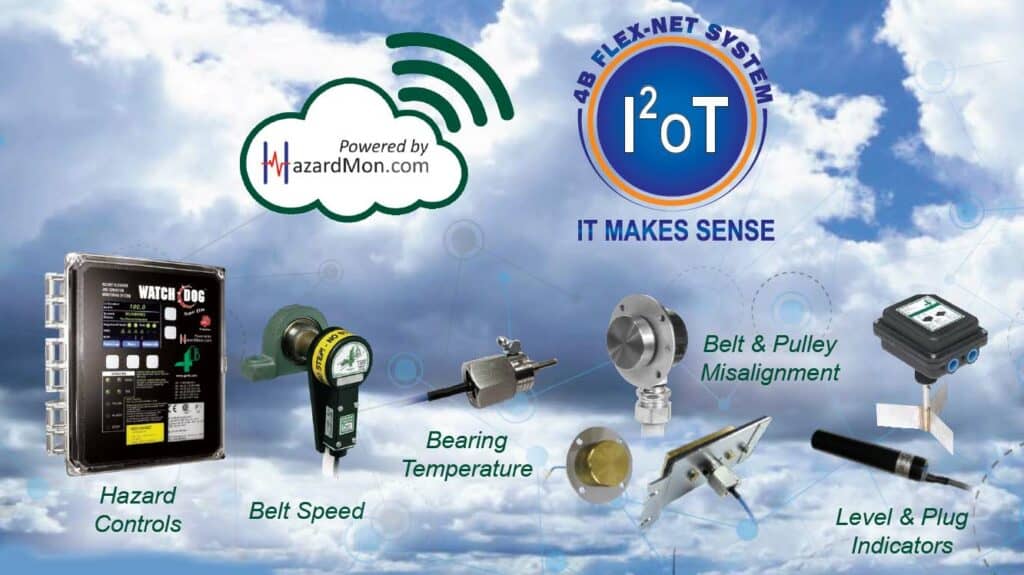
If the material being elevated is too abrasive for the bucket resin being used, employing digger buckets or changing to nylon or polyurethane buckets may help. 4B’s engineering team can assist with these issues along with any corrections to the elevator leg design, belt speed and bucket spacing.
ISSUE 4: Loose sprockets on the head shaft
The head sprocket on continuous discharge chain bucket elevators can come loose from the shaft because the set screw in the keyway may fail. The sprocket may wander, and the buckets eventually scrape the casing. Here, again, is metal-on-metal friction. Aside from wearing the buckets prematurely, this friction is a heat source that could lead to a dust explosion.
The installation of an extended range proximity switch on each side of the leg casing can sound an alarm when the chain moves over and can automatically shut down the elevator if the condition persists.
ISSUE 5: Chain wear
In continuous chain bucket elevators, the chain barrels may start to flatten. This indicates possible chain stretch and/or improper meshing with the sprockets. The chain is wearing prematurely, or stretching, and impeding the efficient function of the entire system.
Periodically inspect the chain barrels and chain for excessive wear, cuts, grooves, or flat spots. Chain barrel wear results in “hooked” sprocket teeth which accelerates chain wear, so it is important to also inspect the sprockets.
ISSUE 6: Loose fasteners
The nuts and lock washers that secure elevator bolt fastening systems can come loose. Inattention during installation and the constant vibrations of the elevator can work these items loose. This is the reason equipment manufacturers recommend the regular tightening of elevator bolts throughout the life of the bucket elevator. No one wants an elevator bucket to become detached and cause damage.
One solution to this problem is the use of fanged style elevator bolts, in conjunction with a nylon insert lock nut (nylock). The fangs bite into the belt cover and prevent the bolt from rotating as a nylock nut is applied. Once in place, it is less likely that the nylock nut will back off due to system vibration.
These are six of the most common problems identified during 4B bucket elevator inspections. Many other issues can arise, and 4B’s team of bucket elevator specialists is qualified to inspect and provide solutions to help bring your bucket elevator back to its optimum performance.
4B BUCKET ELEVATOR MONITORING SYSTEMS:
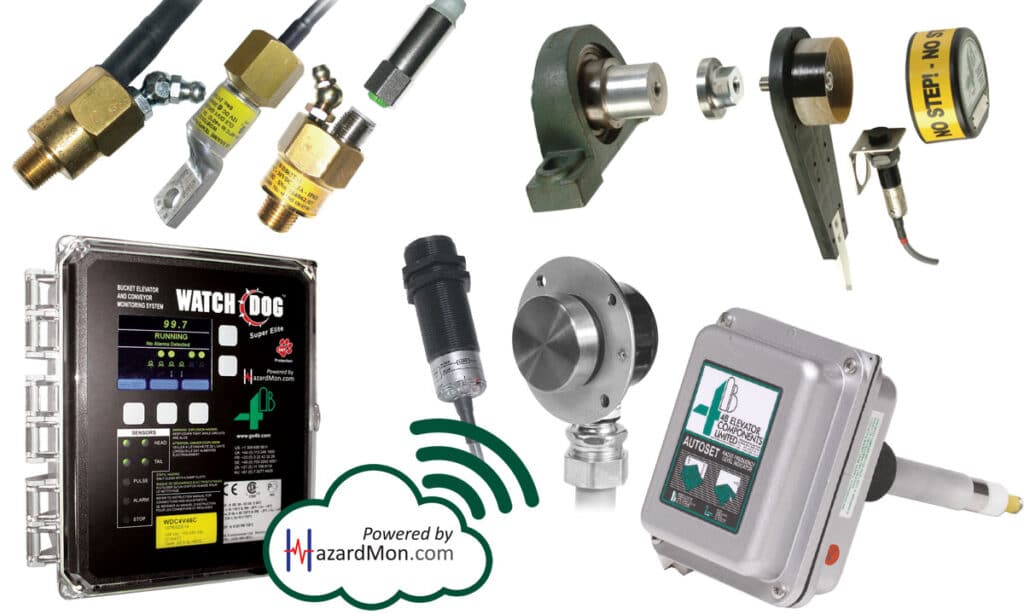
Monitoring bucket elevators is important not only to ensure the system is function efficiently, but also to reduce the risk of dust explosions. 4B has a wide range of sensors for monitoring the various parts of bucket elevators. The most common areas for monitoring include: bearing temperature, speed / motion, belt alignment and level / plug indication All of 4B’s sensors can be connected to either 4B’s own hazard monitoring systems or to a PLC.
4B’S ENGINEERING & SUPPORT SERVICES
At 4B, engineering services and support have always been at the core of the business, and just as important to the business as the products themselves.
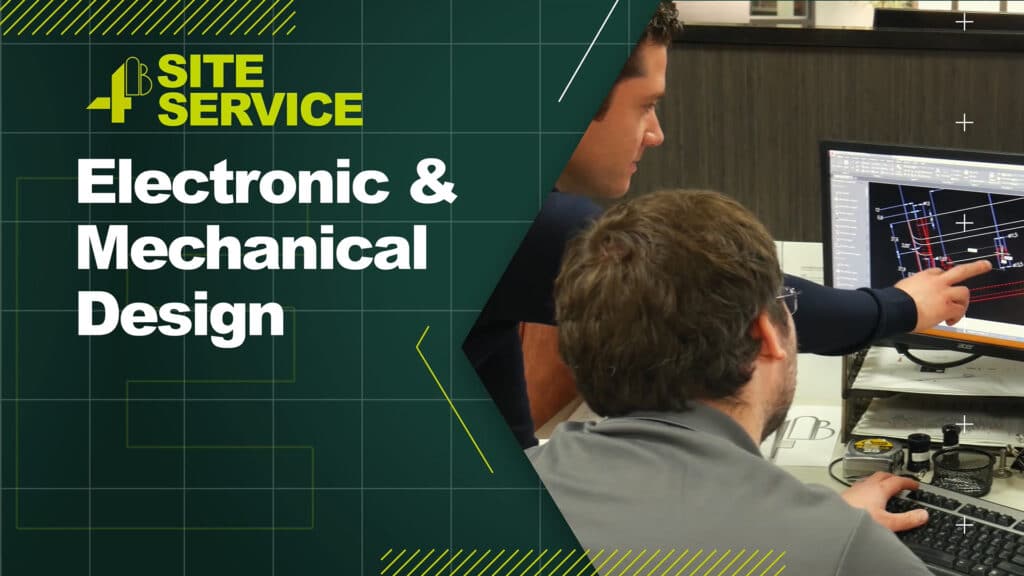
Whether it is a technical problem on an existing installation or advice needed for a new installation or an upgrade of a facility, 4B engineers thrive on the challenge of providing innovative engineering solutions. 4B can also assist with inspection of equipment, maintenance as well as testing and commissioning services.






